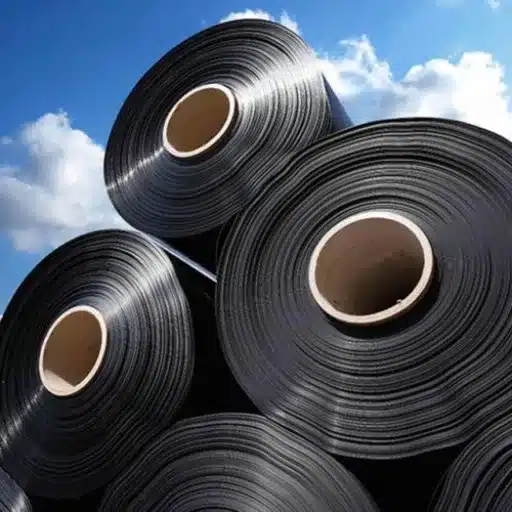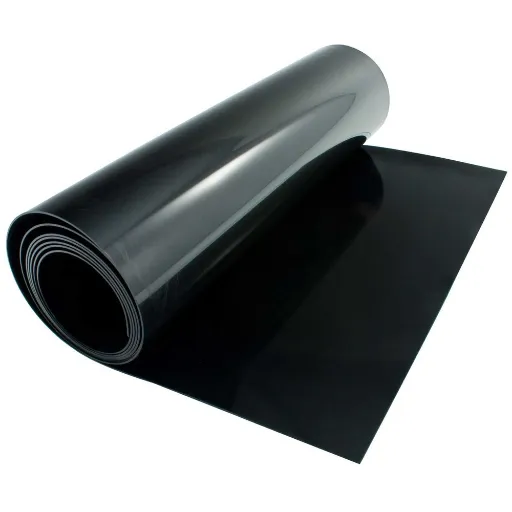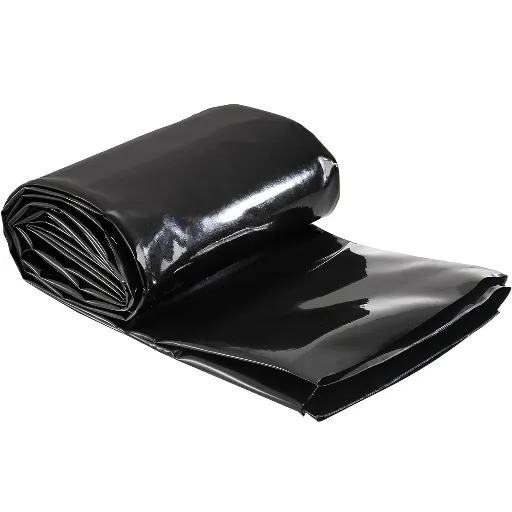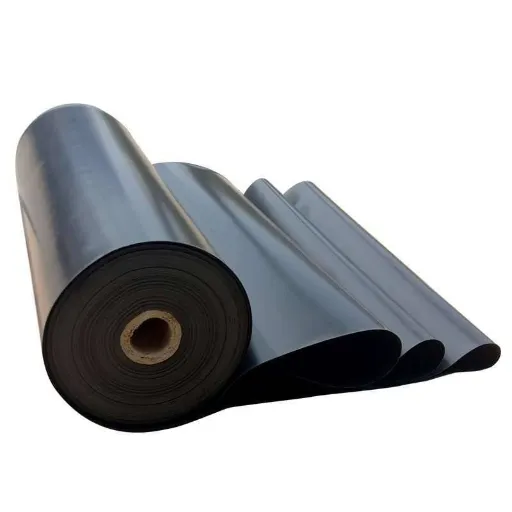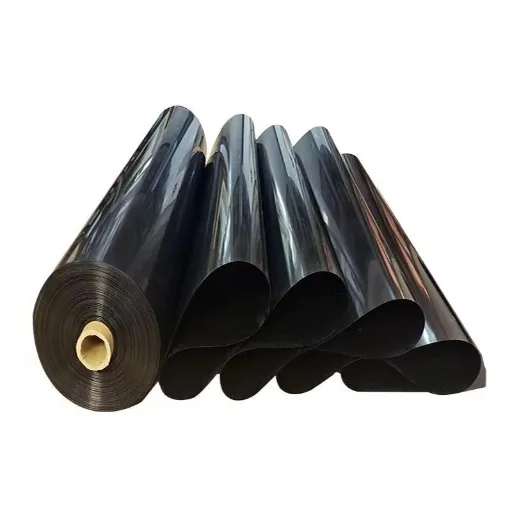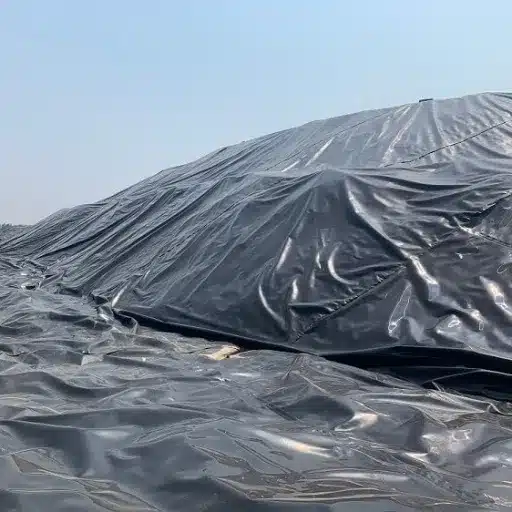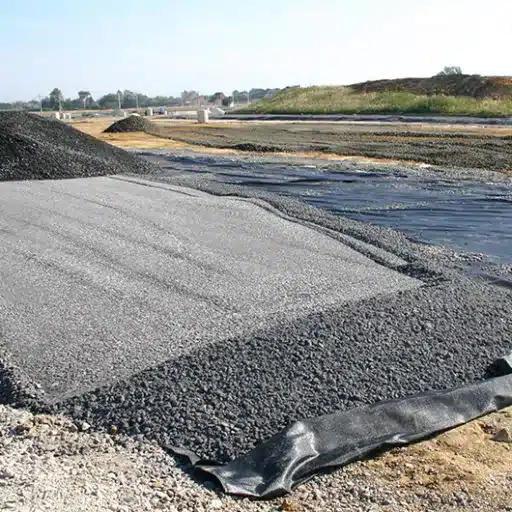Making sure containment systems in modern civil engineering projects are functional and sustainable is of utmost importance. Bituminous Geomembrane (BGM) liners prove to be one of the materials gaining attention for such reliability and versatility. Known for its extreme durability, impermeability, and resistance to harsh environmental conditions, BGM finds application in almost all containment related activities of landfill liners to water reservoirs and more. This article goes into the specific properties of BGM liners, their advantages over their traditional alternatives, and how they forge the civil engineering containment of tomorrow.
Significance in Civil Engineering
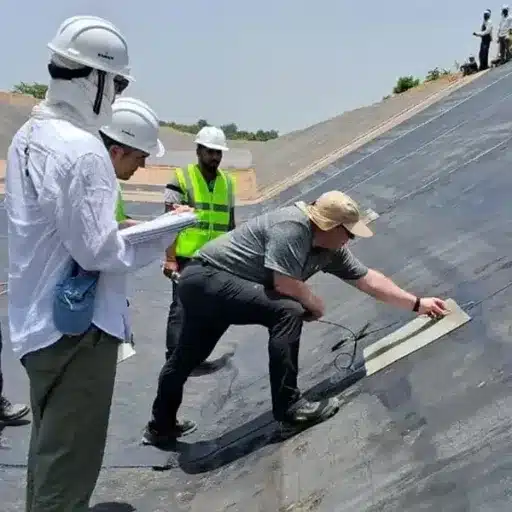
Bituminous Geomembranes (BGMs), being adaptable and reliable under many applications, find their significance in civil engineering. As these products do not bless structures with waterproofing, they offer leakage prevention and the longevity of the structures. BGMs are auspiciously used against seepage from dams, landfill liners, canals, and tunnel lining where impermeability for chemical and adverse environmental action evaluation in necessary.
📊 Market Growth Statistics
Recent data support their increased importance in the industry. Market insights foresee the global geomembranes market climbing to beyond USD 3.7 billion in 2028 with a CAGR of nearly 7.1% from 2023 through 2028.
Key Growth Drivers
- Stringent environment regulatory standards
- Rise in infrastructure development
- Genuine concern for dependable water and waste management systems
BGMs offer greater advantages in civil engineering compared to other geomembranes. Their durability under extreme conditions, such as UV resistance or variations in temperature and resistance to mechanical stresses, makes them best for projects requiring long-term performance. In addition, innovations in material composition have increased their sustainability, which, in turn, is driving the industry to apply greener construction methods. This effective marriage of efficiency, durability, and sustainability makes BGMs a material of choice for the present-day infrastructure development.
Overview of Coletanche® Bituminous Products
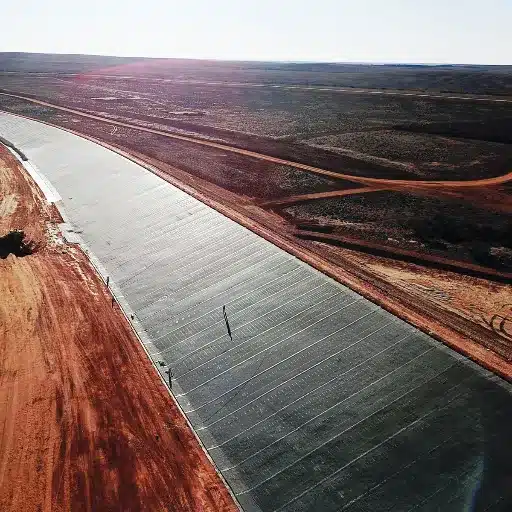
🏆 Premium Performance Features
The Coletanche® bituminous geomembranes (BGMs) stand out for the extreme versatility offered in performance and solutions throughout varied construction needs. These waterproofing solutions are designed for the most demanding conditions, so they have become esteemed in applications like landfill liners, dam waterproofing, canal lining, and tunnel sealing.
Advanced Material Composition
Through the utilization of advanced polymer-bitumen materials, Coletanche® BGMs marry those properties requiring high tensile strength, very high puncture resistance, and flexibility, rendering them reliable in simultaneous environmental and mechanical stressors.
⏰ Longevity
Coletanche® products remarkably could outlast 100 years, which is even supported by many studies and applications in practice.
🛡️ Resistance
Resistance to UV degradation and extreme temperature guarantees almost no maintenance even in the hardest climatic conditions.
Installation & Sustainability Advantages
The procedures of installation are made quite easy because of self-adhesive properties of the material; hence, that also brings down extension time and total installation cost. These products have been manufactured with low environmental impact, utilizing recycled materials in their manufacture, and are fully recyclable at the close of their working life.
🔬 Technical Performance Data
In canal waterproofing projects, the permeability of Coletanche® BGMs has been assessed to be below 10^-14 m/s – an assessment translating into high containment efficiency and reduced water loss. These bituminous geomembranes are compatible with a wide range of soils and substrates, thereby eliminating the need for expensive surface preparation.
Key Features of BGM Liners
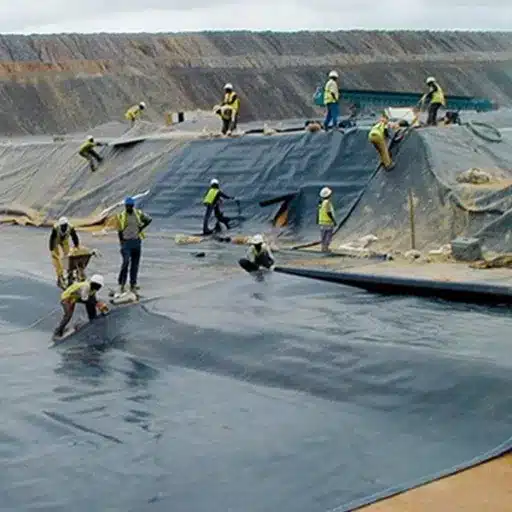
Composition and Structure
Bituminous geomembrane (BGM) liners are precisely engineered combining materials in composite form to provide superior performance for a versatile range of applications. The core consists of primarily nonwoven geotextile impregnated and coated with a high-grade bitumen binder. This composite multilayer structure produces a membrane with excellent impermeability and mechanical strength and durability.
Multi-Layer Structure Analysis
| Layer | Composition | Function |
|---|---|---|
| Uppermost Layer | Oxidized bitumen with elastomeric polymers | UV resistance, chemical protection, temperature stability |
| Reinforcement Layer | Polyester or glass fibers | Tensile rigidity and dimensional stability |
| Bottom Layer | Bitumen with bonding additives | Enhanced bonding, flexibility, substrate application |
Performance Specifications
🌡️ Temperature Range
-22°F to 176°F
(-30°C to 80°C)
💧 Permeability
1 × 10^-13 m/s
Almost impermeable
💪 Puncture Resistance
Up to 2000N
ASTM D4833 Standard
⏳ Service Life
> 25 Years
Standard load conditions
Waterproof Properties
BGM liners are created to provide waterproofing to an extraordinary degree and hence should be the very best to counteract fluid infiltration. Constructed with high-quality materials such as bituminous geomembrane layers reinforced by polyester geotextile, these liners can boast of permeability much below that of the geomembranes under obligations.
New studies prove that permeability can drop anywhere between 10⁻¹⁴ m/s to 10⁻¹² m/s, keeping all projects water-resistant in extremely crucial situations. Comparatively, this advanced waterproofing assures almost zero seepage, thus fostering confidence in water reservoirs and landfill baselines.
Advantages of Bituminous Geomembranes
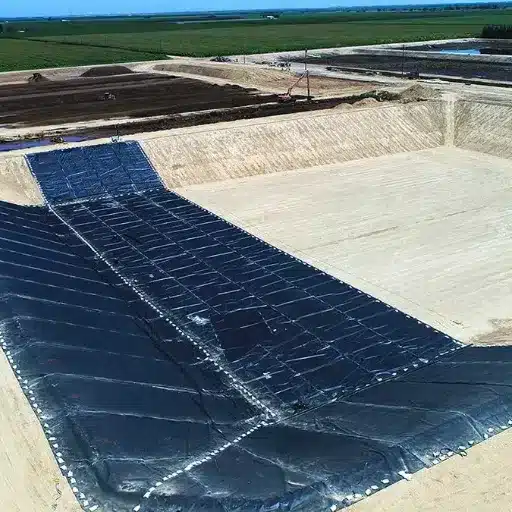
🔧 Flexibility & Durability
The liners offer a lot of benefits exhibiting characteristics like flexibility and durability to sustain impermeability under great pressure. They resist chemical attacks and UV degradation for long-term performance even under harsh conditions.
💰 Cost-Effectiveness
Being excellent balance bearers between durability and cost, BGMs represent a cost-effective solution for a variety of containment applications. This becomes a perfectly reliable and environmentally friendly choice for water-containment projects.
Long-Term Cost Analysis
The initial bituminous geomembrane investment may, in fact, be higher than that of a simple HDPE or PVC liner, but the big payoffs come from maintenance and replacement costs further down the road. Research finds that the average life span of a bituminous geomembrane properly installed can be more than 30 years, even in hostile environments such as extremes in temperature or intense UV exposure.
Cost Comparison Benefits
- BGMs mitigate the danger of leaks, thereby sharply cutting down costs of repairs and remediation
- Flexibility resists puncturing, keeping replacement costs down
- Repair costs are about half compared to traditional geomembranes during a 20-year time horizon
- Outstanding performance in harsh chemical environments limits the need for extra protective layers
Flexibility and Application Variability
Bituminous geomembrane liners can be uniquely flexible and adaptable in practically all industrial and environmental applications. Their design enables them to perform effectively in situations where accepted materials usually fail – severe temperature ranges or highly corrosive environments. This makes BGMs suitable for those industries dealing with mining, waste management, or water resources.
📈 Performance Improvements
- Mining Operations: BGMs may reduce leakage rates by 90% when compared to regular liners
- Water Conservation: Employment of BGMs within irrigation canals can save on water by 35%
- Environmental Protection: Severely protecting groundwater quality standards
Mining and Industrial Applications
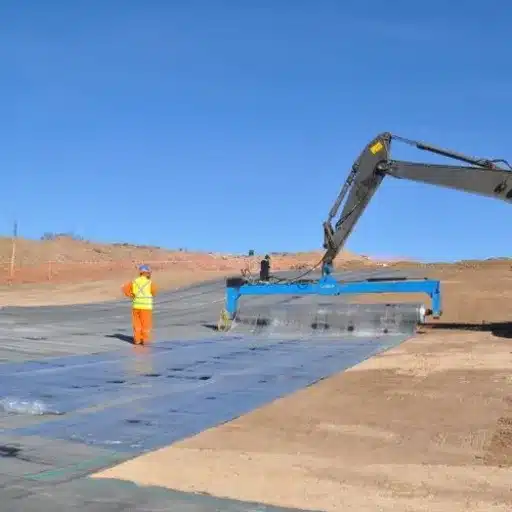
Mining Applications
In mining activities, BGM liners help contain the hazardous materials and guarantee environmental safeguards. A major application of this kind is in tailings storage facilities, where these liners provide a barrier to stop the seepage of harmful substances, such as heavy metals, into the surrounding soil and water sources.
📊 Industry Growth Data
Industry data suggest that the global mining geomembrane market will witness a CAGR of around 8.1% from 2023 to 2030, being fueled by increased mining activities and growing focus on sustainable practices.
Industrial Applications
- Wastewater ponds
- Industrial effluent containment
- Hazardous waste landfills
Their waterproofing capabilities ensure the safe containment of industrial byproducts in order to prevent leaks into the environment and pollution of groundwater in violation of environmental standards such as those enshrined under ISO 14001.
Environmental and Economic Benefits
Inherently, BGM liners are used in mining and industrial operations that are beneficial for environmental protection but also for enhancing operational efficiency. Given their nature, these liners are so durable that when placed, they need not be replaced whenever for quite some time, thereby reducing costs in the longer run. Further, due to advancements in production technologies, an upgrade could now be offered for making liners that can be customized to make the best-fit combinations for a particular need of the project.
Landfills and Waste Management
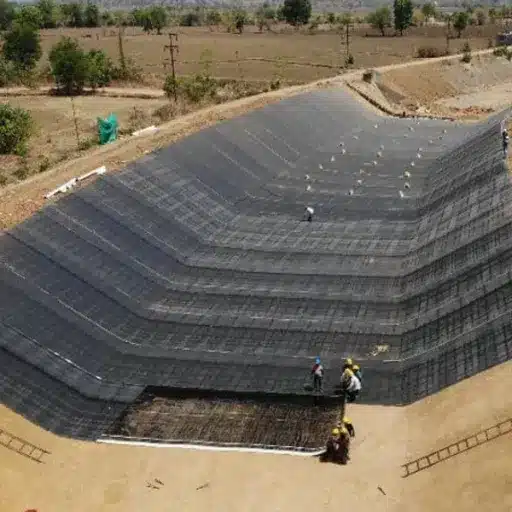
📈 Waste Management Statistics
Landfills play this vital role as waste management centers for the packaging of municipal solid waste (MSW). The United States Environmental Protection Agency (EPA) mentions that, for 2018 alone, approximately 146.1 million tons of MSW were landfilled, which accounts for well over half of the waste generated in the United States.
These kinds of landfill activities augment the environment with very little harm; if at all, efforts are made to reduce emissions of greenhouse gases, especially methane, via some advanced technologies of methane capture and conversion systems.
BGM Liner Impact on Landfills
The introduction of the likes of BGM liners has changed the working of landfills by providing containment levels with strong resistance. They act as barriers preventing poisonous leachate from getting into contaminating the soil and groundwater in an area. Therefore, when combined with good maintenance and monitoring, this liner system greatly minimizes the risk of environment-related hazards.
🛡️ Environmental Protection
Global scenario reports revealed that efficient liners can cut down incidents of groundwater contamination by as much as 90%.
Comparison with Other Geomembranes
| Geomembrane Type | Key Advantages | Best Applications |
|---|---|---|
| HDPE Liners | Durability, chemical resistance | Long-term landfill applications |
| PVC Liners | Flexibility, easier installation | Short to medium-term projects |
| EPDM Liners | Greater flexibility, installation ease | Short-term applications |
| BGM Liners | Balanced durability, flexibility, cost-effectiveness | Versatile – suitable for multiple applications |
Disadvantages and Limitations of Bituminous Liners
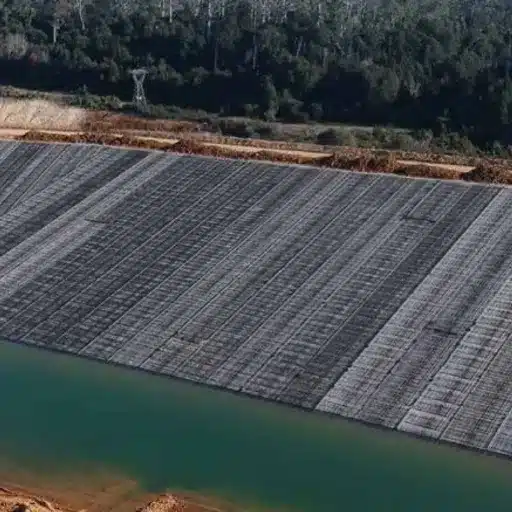
⚠️ Key Limitations to Consider
Bituminous liners enjoyed many advantages but not without disadvantages. Understanding these limitations is crucial for making informed decisions in project planning.
Cost and Installation Challenges
💰 Higher Initial Costs
Bituminous liners can generally be up to 40% more costly initially compared to alternatives like polyethylene liners, which could be an issue for budget-constrained projects.
🔧 Installation Complexity
Labor costs can be 15-20% higher due to specialized equipment and skilled personnel requirements.
Transportation and Handling Issues
- Heavier and less flexible compared to alternatives
- More difficult transport and handling, especially in remote areas
- Logistics costs can rise up to 30% compared to lighter liners
Performance in Extreme Conditions
🔥 High Temperature Challenges
Raised temperatures can cause thermal expansion and softening of these materials, thereby reducing tensile strength and possibly causing deformation. Research has revealed a decrease of tensile strength by about 8-12% in desert-like regions with temperature frequently over 120°F (49°C).
❄️ Cold Weather Limitations
Especially chilling environments can cause cracking from repeated freeze-thaw cycles. Studies revealed that micro-cracking occurred with liners subjected to below -20°F (-29°C) conditions in three years, potentially compromising impermeability.
Recent Technological Improvements
🔬 Advanced Polymer Modifications
Recently advanced polymer-modified bituminous liners push the very limits of their operational conditions:
- New formulations displayed greater elasticity for thermal exposures
- UV-resistant additives prolong service life in high solar intensity environments
- Degradation reduction by nearly 20% compared to traditional materials
Reference Sources
-
Geosynthetics Magazine
- Article: The Rise of BGMs: A Decade of Transformation in the Geomembrane Industry
- This source discusses the growing adoption of BGMs in industries like landfill and mining, highlighting their advantages over traditional geomembranes like HDPE. It also covers their mechanical durability, low permeability, and suitability for extreme conditions.
- Source Link
-
Global Growth Insights
- Report: Geomembranes Market Size, Share, Growth, and Industry Analysis
- This market analysis provides data on the applications of BGMs in waste management, water management, and mining. It also includes market trends, growth drivers, and regional insights, making it a valuable resource for understanding the feasibility of BGMs in various industries.
- Source Link
-
Geosynthetic News Alerts (GNA)
- Article: The Rise of BGMs: A Decade of Transformation in Geomembrane Industry
- GNA is a widely read publication in the geosynthetics industry. This article explores the technical and environmental benefits of BGMs, their applications, and their growing market share in the geomembrane industry.
- Source Link
Frequently Asked Questions (FAQs)
❓ How does the Coletanche® BGM liner impart durability?
Designed with very high elasticity and an utmost resistance to weather, the Coletanche® BGM liner is suitable for applications where durability forms a criteria. The composition affords it resistance to differential settlement and to the forces of wind uplift acting on it, thus making it suitable for use in a variety of applications.
❓ What is the distinction between the Coletanche® ES range and the Coletanche® XP range?
The Coletanche® ES range, being thinner, is made from elastomeric bitumen and can thus be utilized where flexibility is important. The XP range is another variation of the ES range consisting of a single structure and provides additionally enhanced performance in certain geosynthetic applications, particularly in environments that require high durability.
❓ How is bituminous waterproofing different from conventional methods?
Bituminous waterproofing uses materials such as elastomeric bituminous geomembranes, which provide much better flexibility and adhesion than conventional ones. This enables the method to perform much better under a greater variety of weather conditions and provides a longer life for structures which need actual waterproofing.
❓ Can bituminous geomembranes be welded at installation?
Yes, bituminous geomembranes are welded during installation to provide seamless joints. The welding process, therefore, improves the watertight performance of the liner so that it can contain waste effectively and protect the subgrade against contamination.
❓ What makes Coletanche® bituminous geomembranes suitable for mining applications?
High puncture resistance and ability to stand harsh environments are some of the factors favoring the applications of Coletanche® bituminous geomembranes in mining. They are suitable for containment as they are cherishingly resistant to different chemicals encountered in mining processes.
🎯 Conclusion
BGM liners continue to be one of the key solutions for industries that seek to enhance productivity along with sustainability. Whether you are an industry practitioner or simply curious about advanced engineering materials, understanding the place BGM holds in sustainable infrastructure support is crucial for modern civil engineering containment applications.

